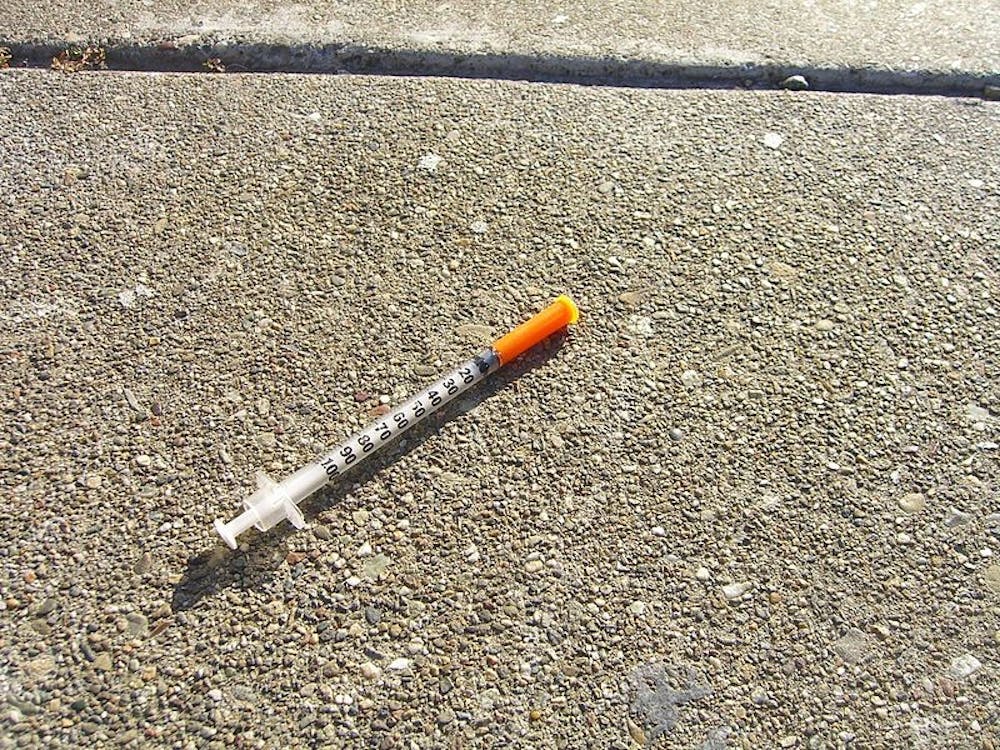Tess Sohngen, Columnist
It was my first day at the Greater Cincinnati Homeless Coalition and Leslie said she saw two people -- a man and a woman -- walk down the alley.
What alley?
She told Daulton she wanted to go check it out in a few minutes. Daulton said, "Alright," and we all went about our business. I was cutting paper with a broken guillotine-like contraption, so I had room in my mind to imagine the alley. I had not noticed the alley across the street, sandwiched between the roastery for Coffee Emporium and a fenced parking lot. A brown dumpster was its door, and one would have to sneak around it like a mouse in order to disappear into the alley.
Leslie came back to grab Daulton to check the alley with her. I think she was afraid to find a body, but maybe just the possibility of finding one -- the inevitability of it -- was enough to not want to go alone.
It was the most frequented heroin spot in Over-the-Rhine, Leslie told me. Last week, the Cincinnati police responded to 30 overdoses in one day, and now the National Institute on Drug Abuse has declared it "the most important drug trend in the Cincinnati area." The people of Cincinnati knew it was coming as it crawled down Interstate 71 from Cleveland to Columbus. It was only a matter of time before the wave of heroin overdoses crept to their front doors. It has since crossed the river and taken hold of Northern Kentucky.
The heroin problem, Leslie said, is not a race problem. In 2013, 48 percent of users were White (non-Hispanic); 58 percent were between the ages of 20 - 34, according to TEDS data. Heroin cares not what color you are, how high your income, or whether you have a family. The woman Leslie saw was "about to burst" -- with a baby, that is. Leslie asked if I wanted to go with them.
We slid behind the dumpster across the road and slowly made our way down the alley. We were looking for needles, broken or not. Bottle tops and serrated bottoms of soda cans littered the pebbled ground. It smelled, too, but not as bad as I had imagined. Halfway down the alley the brick building on the left ended, but a matching fence continued to enclose the alley. It was more open and sunny than most alleys because of the parking lot, not the dark, dungeon-like alleys in other cities.
Why does no one seem to talk about the heroin problem in Cincinnati? It's here, and everyone knows that it's here in Over-the-Rhine and Lower Price Hill, where four student teachers from Miami are living this semester. Racial tension, poverty, homelessness, gentrification and pollution are here, too, and most community members will tell you their frank opinion about it. But heroin? No. That is the one issue all community members seem to want to keep invisible.
At the end of the alley, the fences on either side create a dead end to a broken desk chair, shaded by a skinny tree. Daulton pushes against the left fence to reveal where people sneak in and out in case the dumpster door to the street is too crowded. No needles yet, and no bodies, so we continue toward the very end of the alley at our slow pace, as if one step too eager would trap us there and turn us into addicts ourselves.
Leslie checks the alley from the sidewalk every time she crosses it. I imagine the 7,000 different ways we someday could uncover a body here. Are those addictions, too?
sohngetm@miamioh.edu

